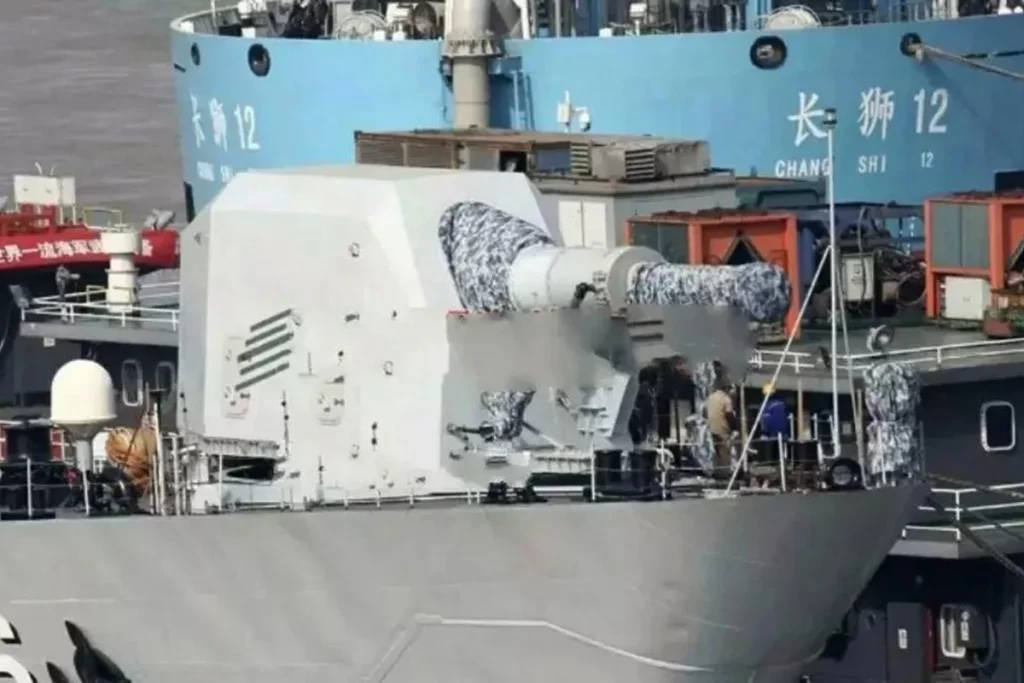Recent news reports and analyses authored by Western military analysts have placed a growing emphasis on China’s notable advancements in implementing its electromagnetic railgun initiative. Comparable tests have been carried out both domestically and internationally, indicating that China’s technological advancements are not being hidden.
US military experts have been closely monitoring the research of the Chinese military in this area for the past few years, raising concerns about the potential impact of China’s naval railgun technology. The question of whether China’s naval railgun could be ready by 2025 and if Beijing will surpass the US in this field is a matter of global significance. US media even published forecasts from US intelligence suggesting that by 2025, China could possess the most powerful naval weapon in the world, a development that could significantly alter the global military balance.
A railgun is an exotic hybrid between a catapult and a cannon that uses electromagnetic energy instead of gunpowder to propel projectiles at hypersonic speeds of up to 7 Mach. Electric currents generate magnetic fields that accelerate the projectile along two rails. Theoretically, a railgun should be much cheaper than, for example, a $1.4 million Tomahawk missile, which has a greater flight range but can be intercepted by many modern air defense systems. A warship equipped with such a weapon can carry a huge number of small but high-speed railgun projectiles, and according to US intelligence, each shot from the Chinese railgun could cost between $25,000 and $50,000. However, it’s important to consider the potential environmental and safety concerns associated with the use of railguns, such as the disposal of spent projectiles or the risk of accidents during operation.

As previously reported by the US news agency CNBC, “the Chinese railgun was first introduced in 2011 and underwent tests in 2014.” In recent years, China has been conducting additional tests to improve both the power source for such weapons and the range of their use, including targeting objects in space.
Recently, there have been further reports in the media about the People’s Liberation Army Navy of China (PLAN) conducting tests of a new electromagnetic railgun for launching smart bombs. According to reports, the railgun launched a bomb 9 miles (15 km) into the stratosphere at speeds exceeding 5 Mach. However, during the tests, some problems were identified related to the stability of the projectile’s flight, causing the bomb to miss its target. Therefore, PLAN will now conduct additional research to address the issue as indicated.
According to the South China Morning Post, the Chinese railgun projectile Smart bomb is equipped with a pair of gliding wings for guided descent. Theoretically, these wings allow the bomb to follow a smooth trajectory and hit the target approximately three minutes after launch. However, during the test launch, something went wrong, and the bomb veered far from the intended target.
“The projectile did not follow the expected trajectory, and the maximum range and altitude did not match the calculated values,” the statement from the team led by Lou Junyan at the Naval Engineering University says in a peer-reviewed article published in the academic journal Transactions of China Electrotechnical Society. Lou’s team found that the “smart bomb” was spinning too fast during ascent, which apparently led to its unpredictable tilt. This is a significant technical challenge that needs to be addressed, as it could affect the weapon’s accuracy and effectiveness. According to Chinese media reports, the research group found that the problem seemed to be related to “speed-dependent spin damping.” This phenomenon did not manifest itself in wind tunnel tests and computer simulations, so it was not anticipated to be a problem before the start of the trials. Experts say that rotation stabilizes the projectile’s trajectory, but its frequency should decrease rapidly as the flight speed increases. Failure to do so could cause the warhead to tilt, increasing frontal resistance and potentially affecting the speed and direction of flight.
Using artificial intelligence technology, Lou and his colleagues identified what they believed to be the cause of the malfunction and found solutions to overcome the technical difficulties preventing the practical application of railguns.
According to mechanical sensor data obtained during the tests, the projectile experienced acceleration approximately 35 times greater than gravitational force for about 5 seconds after launch. This, as researchers claim, confirms that it exceeded hypersonic speeds of 5 Mach. No details on the time and place of the test were provided. The calculated speed and range of flight of the hypersonic guided planning bomb were also not disclosed, but naval researchers in their recent works have indicated achieving speeds of 124 miles (200 km) at 7 Mach.
